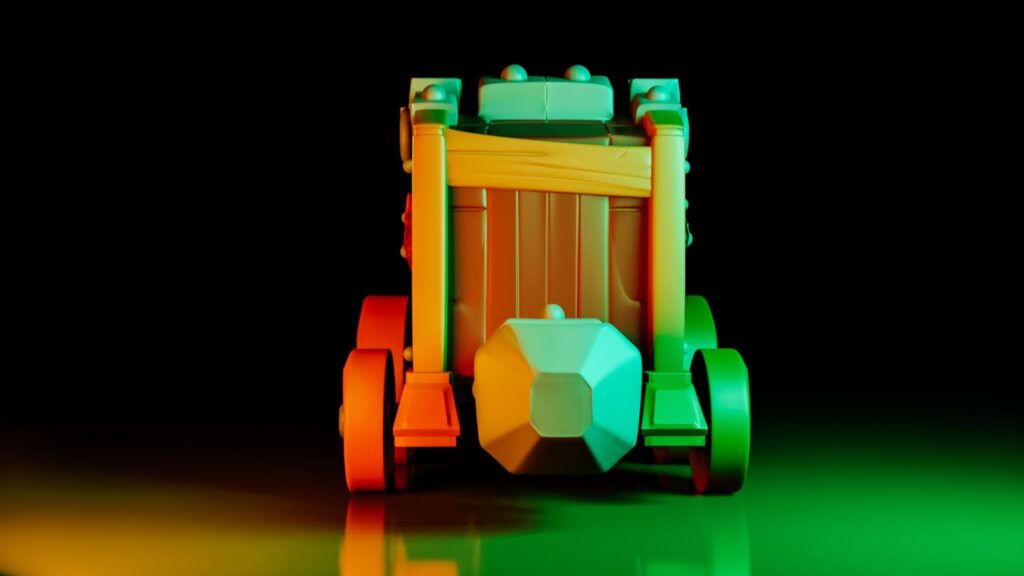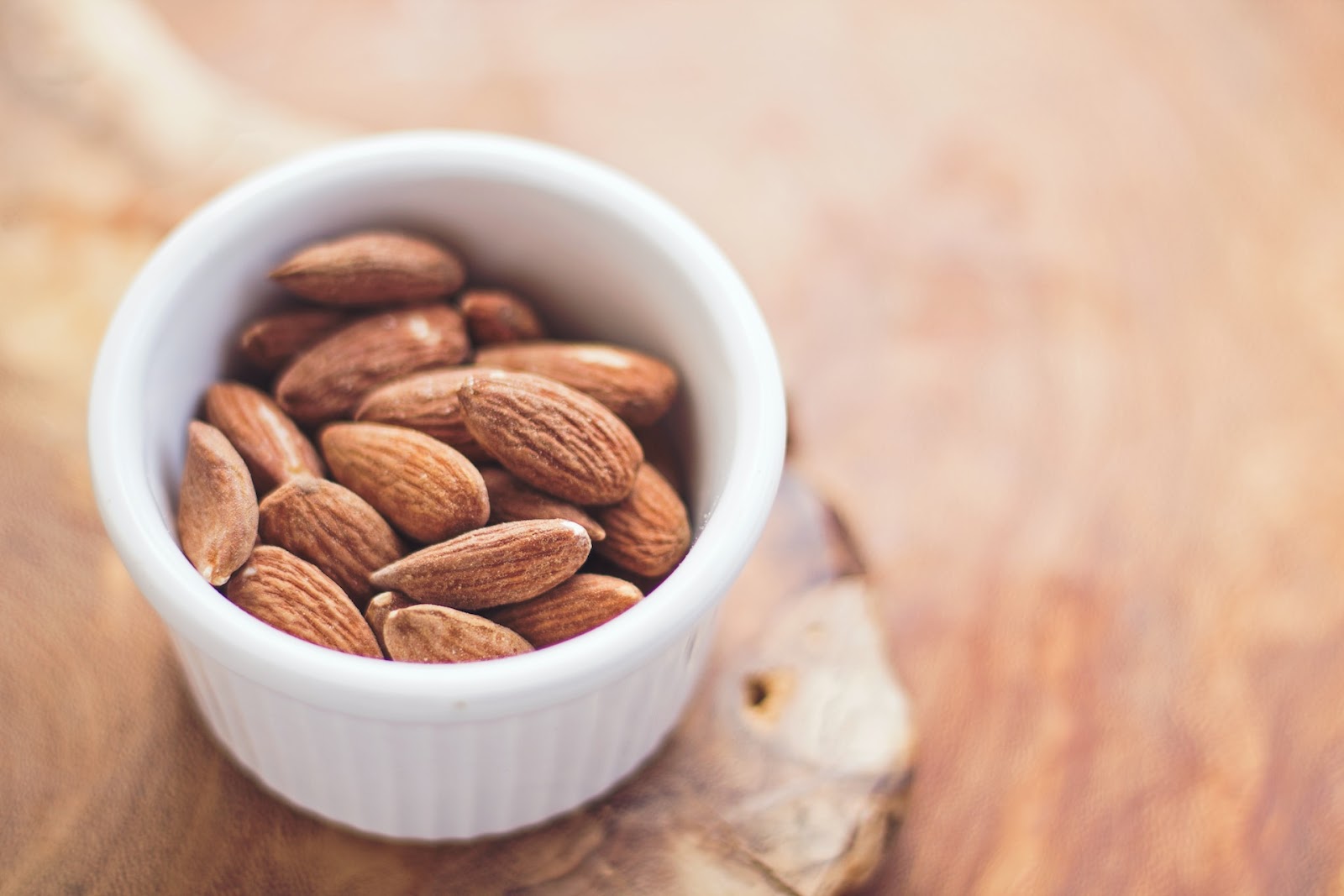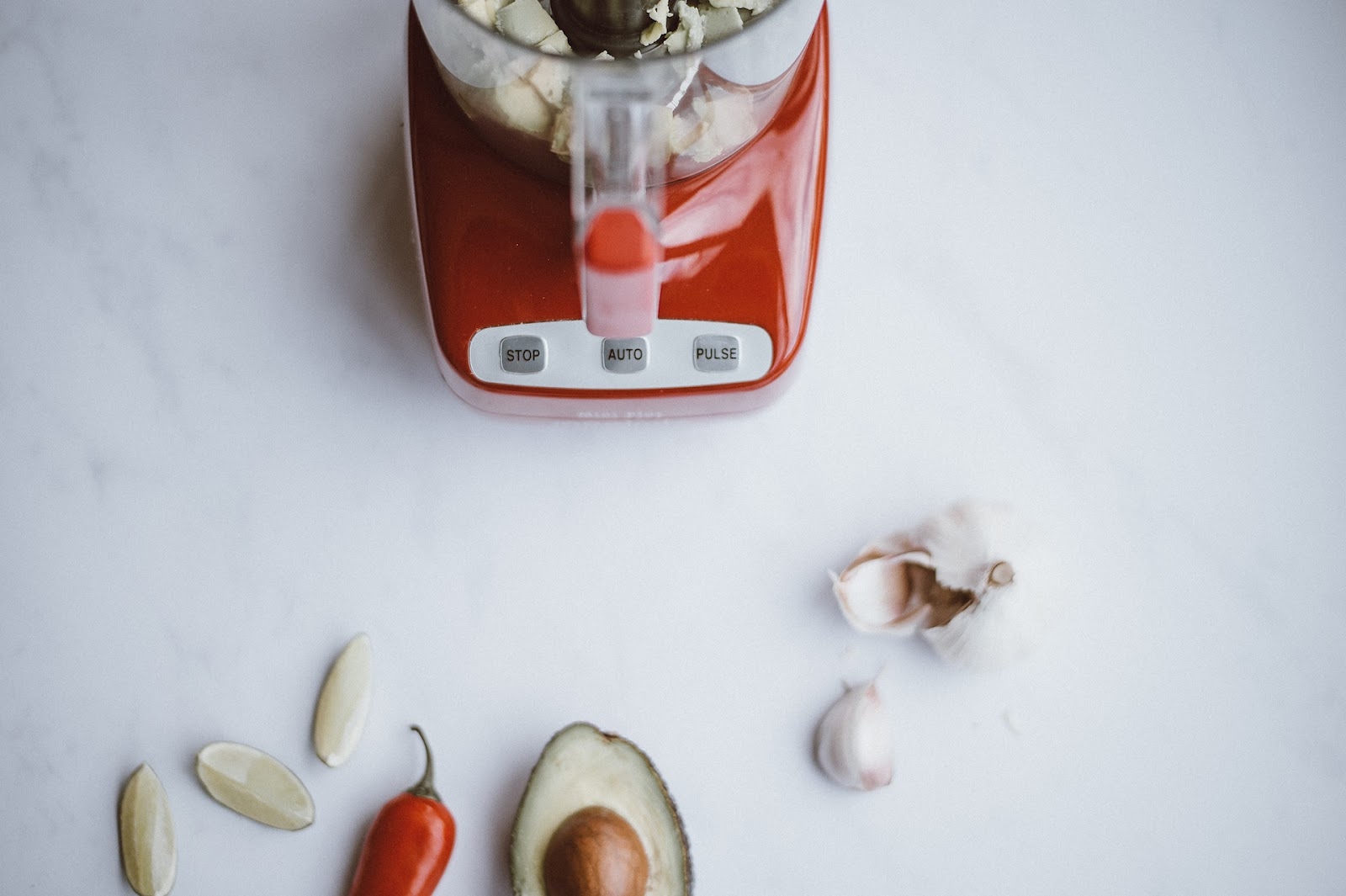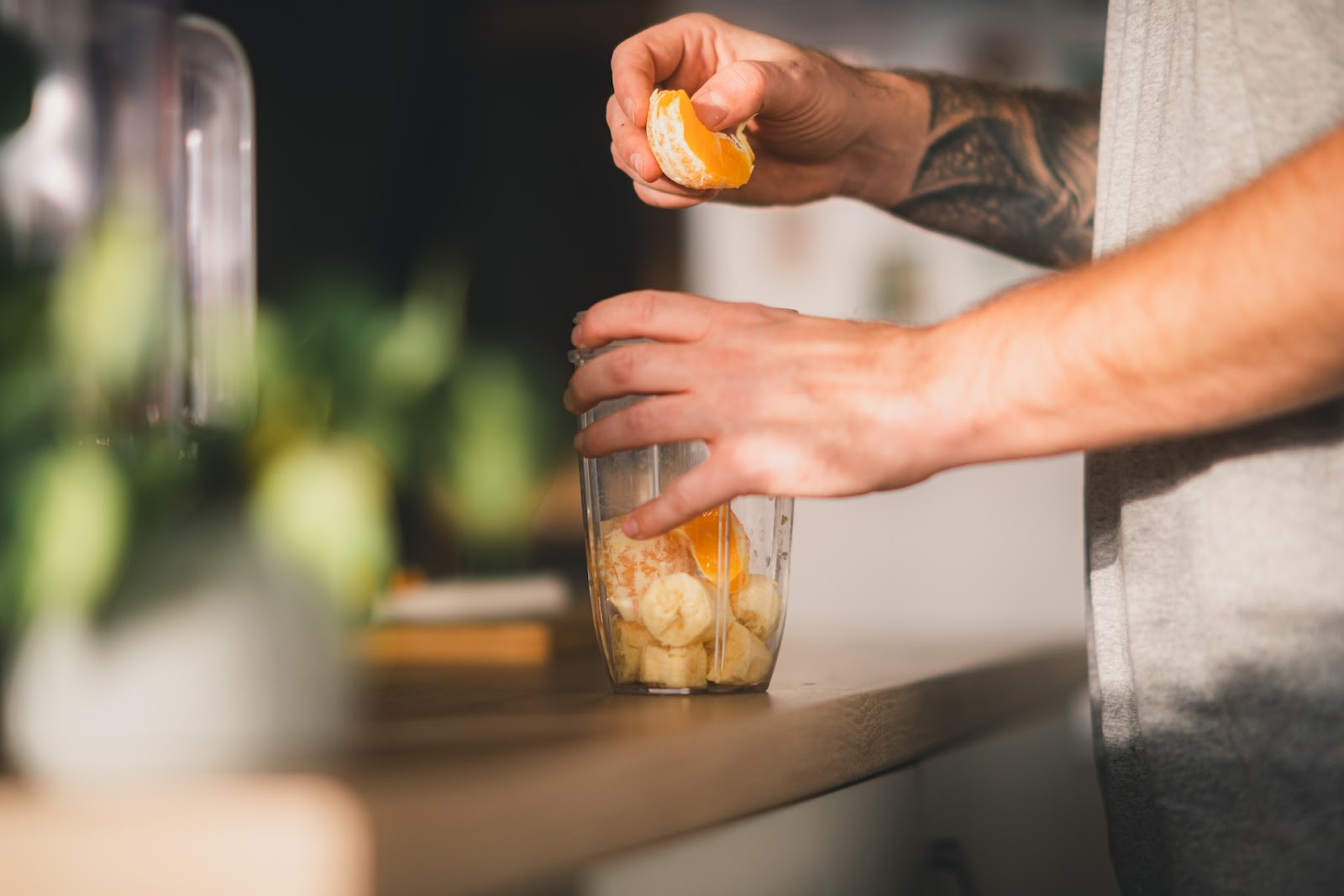
The Similarities Between Food Processors And Blenders
To understand the differences between a food processor and a blender, you can explore the purpose of each. Using a food processor is ideal for tasks like chopping vegetables or mixing dough, while a blender is perfect for creating smoothies or pureeing ingredients. In this section, you’ll delve into the purpose of a food processor and a blender individually as a solution.
Exploring the Purpose of a Food Processor
A food processor performs a range of kitchen tasks such as chopping, slicing, shredding, and mixing. Its purpose is to make meal preparation faster and more uniform. With its various attachments like a dough blade or a grating disc, it becomes an essential appliance for any chef. It is an all-in-one kitchen tool that can dice vegetables in seconds and knead thick dough with ease. Unlike blenders which typically work well with liquids, food processors are versatile enough to handle dry ingredients without adding any extra liquid.
One unique aspect of a food processor is that it has multiple speed options, allowing precision in processing ingredients to the desired size and consistency. This appliance can be used for everything from preparing purees to creating hummus or guacamole.
Pro Tip: Always use the pulse button when using the food processor as this is the best way to maintain control over the final result.
Blenders are like the middle child of the kitchen – not as powerful as food processors, but still capable of making a mess.
Exploring the Purpose of a Blender
A blender enables users to puree, liquefy, and mix wet or dry ingredients. It is mainly used for liquids, which include soups, smoothies, cocktails. Apart from having a blade located near the bottom to blend food at high speeds, it also has an attached cover that makes it easy to pour out the contents. The purpose of a blender is to break down ingredients into a smoother consistency than what is achievable when using manual mixing methods.
Blenders are essential kitchen appliances for both domestic and professional use. They are designed for blending different kinds of food products into a single smooth texture. It can be used as an alternative to grinders or choppers in grinding nuts or spices, creating blended baby food or mixed drinks like slushies and shakes. Its ability to make chunk less smoothies and soups has made it famous among health-conscious people who value nutritious diets.
Blenders are versatile in their functionality because they can blend anything from soft fruits like bananas to hard vegetables like carrots since most models come with multiple speed settings that allow one to vary the blending depending on the product being processed. Additionally, some models can crush ice cubes as well as blend hot liquids without spilling over effortlessly. However, unlike Food Processors & Choppers which have other uses besides blending liquids & purees.
My aunt was preparing dinner for us when I visited her place last week; she had forgotten all about making dessert until my cousin reminded her last minute. As luck would have it, she had all the ingredients required to make cupcakes: eggs butter flour sugar and vanilla essence but no cake mixer! My cousin suggested using Aunt Lily’s blender instead; she was hesitant about this suggestion at first but eventually decided it worth a try after listening more carefully about how blenders work guess what? The cupcakes tasted amazing!
Blending or processing, they both smash things up like a rockstar’s hotel room.
Exploring the Similarities Between a Food Processor and a Blender
To explore the similarities between a food processor and a blender, the section ‘Exploring the Similarities Between a Food Processor and a Blender’ with sub-sections ‘Common Functions of a Food Processor and a Blender’ and ‘Similarities in Design and Components’ will help you understand both appliances and how they compare.
Common Functions of a Food Processor and a Blender
Both a food processor and a blender share several common functions in the kitchen. A deep analysis of each tool will reveal similarities in their uses, characteristics and functionality.
| Common Functions of a Food Processor and a Blender | |
| Chopping | Both are excellent tools for chopping vegetables, nuts, herbs, and fruits |
| Mixing | They can mix different ingredients such as vegetables, dips and soups. |
| Pureeing | Pureeing plays an important role in achieving the perfect texture and consistency in smoothies or purees. |
| Grinding | Spices, nuts and grains can be ground to the desired consistency with both these appliances. |
In addition to these common functions, food processors come packed with accessories that make them versatile grinding machines. The grater disc enables cheese or potatoes to be shredded evenly while the slicing disc is best suited for onions, cucumbers or carrots. On the other hand, blenders have the ability to crush ice effectively without being damaged.
It’s interesting to note that food processors were first invented by Pierre Verdon in France in 1971 whereas blenders were introduced into households in 1922 by Stephen J Poplawski. Through this discussion it becomes clear how despite being two distinct pieces of equipment, they overlap considerably when it comes to cooking needs. Their multipurpose functionality makes them both valuable assets for every type of home cook!
Blenders and food processors may have different modes, but they both know how to blend in with your kitchen décor.

Similarities in Design and Components
Here, we will explore the shared features of two essential kitchen appliances. These culinary instruments have been designed to reduce meal preparation time and increase efficiency. Let’s delve into the similarities in design and components.
| Design Feature | Food Processor | Blender |
| Power Unit | Electric Motor Base | Electric Motor Base |
| Jar or Bowl | Working Bowl (Various Sizes) | Lidded Pitcher Jar (Various sizes) |
| Cutting Blades or Whisks | Interchangeable Blades/Whisks for Various Cuts and Mixing Types | Fixed Blades Ideal for Blending, Pureeing, and Crushing Ice. |
Similarly, both appliances feature a power cord, control buttons on the motor base and safety mechanisms.
It is worth mentioning that although food processors and blenders share several design elements, it is crucial to know which machine best suits your recipe. Food processors are potent enough to handle thick mixtures as well as chop produce rapidly with less liquid content. In contrast, blenders are ideal for creating smooth mixes such as protein shakes or pureeing hot soup effortlessly.
Finally, did you know that the first blender was invented in the early 1920s by Stephen Poplawski? He was inspired to create a drink mixer after seeing bartenders shake cocktails vigorously into a foam. Over the years and with advancements in technology, these machines have evolved to become must-haves in every household kitchen.
Get ready to blend in with the crowd because these key differences between a food processor and a blender are about to be chopped up.
Is a Food Processor the Same as a Blender
To uncover the distinct differences between a food processor and blender, this section with the title “Key Differences between a Food Processor and a Blender” provides an in-depth analysis. You’ll get to explore the functions that are unique to a food processor and those that are only found exclusively on a blender.
Functions Exclusive to a Food Processor
Food processors are designed to perform various functions that set them apart from blenders. These functions are crucial for the preparation of particular food types, and some of them cannot be achieved with a blender. Here are the functions that exclusively belong to a food processor.
| Functions Exclusive to a Food Processor | Description |
| Slicing | Allows precise cutting of vegetables and fruits into desirable sizes and shapes. |
| Dough Making | Enables fast mixing of flour and other ingredients in a large volume, creating better results than manual kneading. |
| Grinding | Gives consistent chopping, coarse grinding, or fine processing that is ideal for nuts, meats, dried fruits, etc. |
In addition to these exclusive functions, some more features make a food processor a must-have kitchen appliance. For instance, they come with multiple blades that do more than just blend or chop but can also whisk eggs, shred cheese and vegetables or knead dough. They also have bigger bowls enabling the preparation of larger quantities.
Did you know that Carl Sontheimer launched the first food processor in the US market in the early seventies after seeing similar devices in France? His intention was to assist professional chefs with their high-volume food prep tasks which were considerably time-consuming at that time.
Blend it like Beckham: The blender’s exclusive functions make it a superstar in the kitchen.

Functions Exclusive to a Blender
Blenders are versatile kitchen appliances that can perform unique functions. These functions are exclusive to blenders, and they set them apart from food processors.
A table outlining ‘Functions Exclusive to a Blender’ shows that it can be used for making smoothies, shakes, and purees with soft foods. It can also crush ice and blend hot liquids without the risk of explosion. Moreover, it is suitable for emulsifying sauces and dressings by mixing oil and water-based ingredients consistently.
| Functions Exclusive to a Blender |
| Makes smoothies, shakes, and purees with soft foods |
| Crushes ice |
| Blends hot liquids without the risk of explosion |
| Emulsifies sauces and dressings by mixing oil and water-based ingredients consistently |
In addition to these unique features, blenders produce finer textures compared to food processors. They are perfect for preparing liquids or semi-liquids such as soups, smoothies, or dressings. Unlike food processors, blenders do not require added liquid to function effectively.
Interestingly, Blenders originated in the 1930s with the intentions of providing a consistent mixture of milkshakes at soda fountains. After their invention, their production was suspended during WWII due to metal shortages and diverted production toward bomb detonators instead of making blenders.
Overall, knowing the key differences between blenders and food processors helps achieve efficient meal preparation in the kitchen. With this understanding comes ease-of-use which lead to gaining more confidence in meal preparation skills while saving time on laborious tasks like chopping vegetables or blending a sauce consistency by hand.
Choosing between a food processor and a blender is like choosing between a Swiss Army Knife and a chainsaw – it all depends on what kind of cutting you need.
Factors to Consider When Choosing a Food Processor or a Blender
To consider the right kitchen appliance with either a food processor or a blender, you should keep some factors in mind. Choosing the ideal appliance requires you to acknowledge your budget, kitchen space, and the intended use. Budget and Affordability, Kitchen Space and Storage Facilities, and Intended Use and Frequency are important factors to look out for while making your decision.
Budget and Affordability
When it comes to selecting a food processor or blender, cost is an important factor to consider. Your spending limit will determine the options available to you. However, instead of only looking at the price tag, it’s also crucial to consider affordability in terms of long-term value.
For instance, choose a reliable brand that offers a warranty, so if something goes wrong with the product, you won’t have to spend extra money on repairs or replacements. Additionally, consider the maintenance cost of your chosen appliance. Ensure that replacement parts are easily accessible and not overly expensive.
Furthermore, weigh up how frequently you’ll be using your processor or blender before making a purchase. If you are an infrequent user who only needs to blend fruits and vegetables occasionally, a lower-priced option may suffice. But if you regularly prepare hearty soups or need an appliance that can keep up with processing tougher foods like nuts or ice cubes, it may be more cost-effective in the long run to invest more money into a high-end model with superior motor power and sturdier blades.
Don’t miss out on finding the perfect kitchen companion by rushing into purchasing one without considering both short and long-term costs; do your research instead.
Can’t decide between a food processor or a blender? Just buy both and let them fight it out for counter space.
Kitchen Space and Storage Facilities
To optimize your kitchen space and storage facilities when choosing between a food processor and a blender, there are several factors to consider. These include:
- The size and weight of the appliance.
- The availability of counter space or cabinet storage.
- The frequency of use and accessibility in the kitchen.
- The ease of disassembling for cleaning or storage.
- If accessories or attachments provide additional storage concerns.
- If the appliance can serve multiple functions to reduce clutter and save time.
It is important to remember that each factor contributes differently to your decision-making process. Keep in mind your individual lifestyle habits, kitchen layout, and culinary expectations to make an informed final choice. A well-organized kitchen not only benefits the cooking process but also influences other household tasks. Having an efficient space means easier meal preparation, quicker cleanup, accessibility for all members, and potentially saving money by eliminating redundant appliances. Whether you’re a smoothie fanatic or a soup connoisseur, your food processor or blender needs to be ready for action like a superhero on laundry day.

Intended Use and Frequency
For selecting a suitable appliance for preparing meals, the considerations of ‘Purpose and Occurrence’ must be taken into account.
The table below presents a comparison of factors to consider when choosing between Blender and Food Processor for cooking different kinds of food and with varying frequency.
| Factor | Blender | Food Processor |
| Purpose | Suitable for liquid-based food (smoothies, shakes, soups) | Mainly used for dry ingredients processing (chopping pulling, grating) |
| Power | Generally lower wattage than processors but good enough for its use cases; typically not as powerful as blenders. | More influential; able to handle tough foods and tougher shredding tasks. |
| Speed Cycles | Comes with pre-defined speed cycles; generally operates at high speeds. | No phase limitations; customizable speed options from smooth to fast grind cycles. |
| Blade Assemblies | Blades are thinner and mainly designed in sets of 2 or 4. Customized blade options are provided such as dough kneading blades, thick solid cutting blades. | Different kinds of chopper and slicer plates can be found in the industry for advanced processing capabilities. |
The selection should depend on unique details relevant to users’ needs like container capacities, ease-of-use regarding cleaning/agility, accessories like blades & jars that come with the device, overall quality/cost balance.
Many brands now provide multi-functional appliances that can function both as a blender and processor by offering an alternative jar option or disc adapter attachments. In 1937 innovator Carl Sontheimer introduced the first-ever food processor named Robot Coupe at Paris’s World Fair by blending vegetables using his modern invention.
Choosing between a food processor and a blender is like picking your favourite child – impossible, but you still have to make tough decisions.
Wrap Up: Deciding Between Owning a Food Processor or a Blender
To make a wise decision about owning either a food processor or a blender, it is essential to weigh the similarities and differences of both appliances carefully. Let us now delve into the various aspects that differentiate them.
- Looking at their functionality, blenders are exceptionally good at making smoothies and purees from soft ingredients such as fruits and vegetables, while food processors can handle more heavy-duty tasks like chopping thick nuts and grinding meat.
| Features | Blender | Food Processor |
| Capacity | Limited | High volume |
| Functionality | Smoothies, Pureeing | Chopping, Grinding |
| Blades/Attachments | Less | More |
| Motor Power | Low | High |
2. A blender has fewer attachments than a food processor. A typical blender comes with one blade or two blades that are aligned at different levels. In contrast, food processors usually come packed with disks for slicing and grating vegetables or cheese and shredding cheese very finely.
Lastly, when considering motor power, there is a difference in speed between both appliances. Blenders have slower speeds compared to food processors due to their limitations on the kind of materials they process.
Our suggestions would be if your primary goal is smoothies or making sauces from softer ingredients; then you should opt for owning a blender. However, suppose you need an appliance that handles more significant projects effectively. In that case, we recommend investing in getting a food processor since they come with multiple attachments suitable for larger volumes of workloads.




